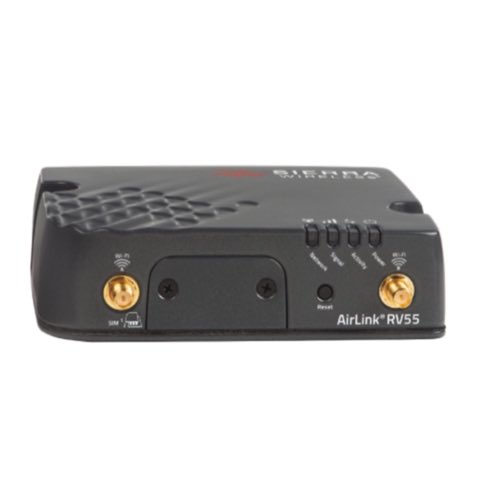RV55 Routers

Semtech RV55 Routers are part of Semtech's reputable AirLink series, the RV55 is designed to provide high-performance LTE Advanced Pro connectivity and is known for its rugged design. It is built to endure harsh conditions, making it ideal for industrial, utility, and transportation applications.
The RV55 stands out for its "always-on", reliable connectivity, designed to manage critical infrastructure. Its ability to deliver high-speed, secure LTE-A Pro connectivity makes it an ideal choice for applications that require real-time remote connectivity and data transmission. These applications could range from connecting industrial equipment to providing vehicle telematics and mobile broadband. The RV55 also offers dual Wi-Fi and dual-modem options, extending its use to a wide array of scenarios.
More Information about Semtech RV55 Routers
The RV55 is equipped with Semtech's AirLink Management Service (ALMS), a powerful cloud-based tool that enables users to remotely manage, monitor, and troubleshoot RV55 devices. The ALMS provides real-time analytics and reporting, which allows users to promptly identify and resolve any network issues. This tool is instrumental in ensuring minimal downtime and maintaining continuous and reliable connectivity.
The Semtech RV55 router is more than just a tool for high-speed, secure connectivity. With its rugged, industrial-grade design and efficient power usage, the RV55 is a strategic partner for businesses operating in demanding environments. By ensuring constant, reliable, and high-performance connectivity, the RV55 helps organizations enhance their operational efficiency and productivity.
Basics of Switches, Routers & Hubs
Ethernet hubs, switches and routers connect computers to networks, devices and other computers.
Ethernet hubs are the least intelligent of the three devices. They simply take any message that is received and transmits it to every other device connected to that hub. For example, if CPU 1 on a network wants to send a message to CPU 5, it will send that message through the hub.The hub will then take that message and send it out to every connected device on that hub regardless of the intended target. When CPU 5 receives that message and wants to respond, it will send its response through the hub which sends it to every connected device. Ethernet hubs do not manage any data that is sent and tend to bog down networks. They also do not offer much security for the network. For these reasons, Ethernet hubs are are being replaced with network switches.
Switches transmit data from one device to another on the same network. Unlike a hub, switches use a switch table to learn where data came from and where to send it. Switch tables store Mac addresses and device ports. By storing this data, a switch can operate more efficiently than a hub, greatly reducing the traffic within the network.
Routers transfer data between devices while learning the location of those devices within the network. They are also a junction between two or more networks. An example of this would be a home router where the home network is connected to the Internet. Another example would be when the router connects two or more networks with different business functions. In addition to connecting two or more networks, a router offers important security features that help protect the network.

